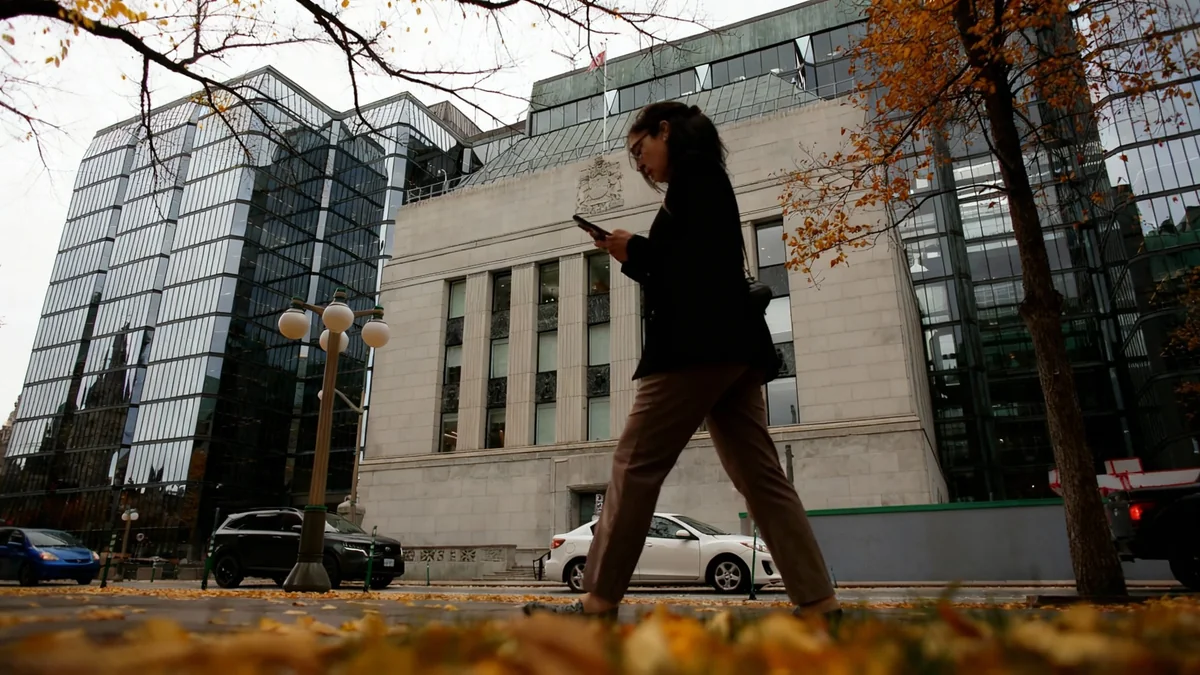The world's most influential central banks are navigating a period of significant internal debate, creating ripples across global financial markets. Following a key interest rate decision by the U.S. Federal Reserve, discussions among officials have revealed deep divisions on the future path of monetary policy. Similar pressures are mounting within the Bank of Japan, while currency markets remain highly sensitive to upcoming economic data and political risks.
Key Takeaways
- Federal Reserve officials are divided over the appropriate level for the neutral interest rate and the potential impact of tariffs on inflation.
- The Bank of Japan is experiencing a split between hawkish and dovish members, increasing pressure on its governor to consider faster interest rate hikes.
- The USD/JPY currency pair is closely watching U.S. labor market data to determine if its recent move above the 149 level can be sustained.
- A potential U.S. government shutdown adds another layer of uncertainty for markets, alongside ongoing international trade discussions.
Federal Reserve Debates Path Forward After Rate Cut
Following the Federal Reserve's first interest rate cut of 2025, a series of public statements from officials has highlighted a significant policy debate within the institution. The core of the disagreement centers on the concept of the "neutral interest rate" and how aggressively the central bank should act to reach it.
Some members of the Federal Open Market Committee (FOMC) believe the neutral rate is higher than previously thought and advocate for a cautious approach. Others argue for a more decisive path to guide the economy. This divergence in views is crucial as it directly influences the future pace and magnitude of monetary policy adjustments.
What is the Neutral Interest Rate?
The neutral interest rate, often called r-star (r*), is the theoretical interest rate at which monetary policy is neither expansionary (speeding up the economy) nor contractionary (slowing it down). When the policy rate is above neutral, it cools the economy; when it's below, it stimulates growth. Finding its precise level is a key challenge for central bankers.
Inflation Outlook Complicates Fed's Task
Underpinning this debate is a disagreement over inflation dynamics, particularly the effect of trade tariffs. One group of officials is concerned that the relatively slow pass-through of tariff costs to consumer prices so far is only a temporary phenomenon. They fear a more significant inflationary impact could materialize later, requiring a firmer policy stance.
Conversely, another faction views the limited impact as evidence that inflationary pressures from tariffs are contained. This group may be more inclined to support further policy easing to support economic growth. This fundamental difference in interpreting inflation data is a key driver of the policy division.
Bank of Japan Faces Pressure for Faster Rate Hikes
In Japan, a similar internal struggle is unfolding. A recent policy meeting at the Bank of Japan (BOJ) revealed a hawkish split on its board, placing significant pressure on its traditionally dovish governor, Kazuo Ueda. Hawkish members are advocating for a faster pace of interest rate increases to normalize policy after years of ultra-low rates.
This growing internal dissent challenges Governor Ueda's cautious and gradual approach. The debate within the BOJ is being closely monitored by international investors, as any shift toward a more aggressive hiking cycle could have substantial implications for global capital flows and the value of the Japanese yen.
A Historic Policy Shift
The Bank of Japan has maintained one of the most accommodative monetary policies among major economies for decades. Any move toward sustained rate hikes represents a significant departure from this long-standing strategy, potentially reshaping investment patterns across the Asia-Pacific region and beyond.
Currency Markets on High Alert
The uncertainty emanating from central banks is directly impacting foreign exchange markets. The USD/JPY currency pair, in particular, remains highly sensitive to expectations about Federal Reserve policy. The pair's ability to sustain its recent breakout above the 149 level will largely depend on upcoming U.S. economic data.
The U.S. labor market report, especially the monthly payrolls figure, is seen as a critical indicator. A strong report could reinforce the case for a more cautious Fed, potentially strengthening the dollar. A weak report might increase expectations for more rate cuts, putting downward pressure on the currency pair.
Meanwhile, the U.S. Dollar Index (DXY), which measures the greenback against a basket of other major currencies, has shown signs of resistance. According to market analysis, the index climbed to 98.60, where it encountered selling pressure near its August range highs and its 100-day moving average. Traders long the U.S. dollar will be watching to see if it can decisively break through this technical barrier.
Political and Structural Risks Add to Complexity
Beyond central bank policies, other factors are contributing to market volatility. In the United States, the federal fiscal year is approaching its end. If lawmakers fail to reach a funding agreement, large parts of the government's bureaucracy could face a shutdown, disrupting economic activity and souring investor sentiment.
This fiscal uncertainty comes at a time when international trade relations also remain in focus. While a framework agreement between the European Union and the United States is in place, the potential for renewed tariff agendas continues to be a background risk for the global economy.
Global Central Bank Mandates
Different central banks operate under varying legal mandates. For example, the Reserve Bank of New Zealand's 2018 Amendment Act requires comprehensive reporting on its policy formulation, emphasizing transparency. In contrast, the Fed has a dual mandate of price stability and maximum employment, while the BOJ has primarily focused on achieving a stable 2% inflation target.
As these economic and political forces converge, investors and policymakers face a challenging environment. The clear divisions within the Federal Reserve and the Bank of Japan suggest that the path forward for global monetary policy is far from certain, ensuring that market volatility is likely to persist in the near term.





